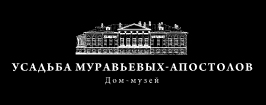SUKHANOVO MANOR PROJECT
Manor history
Architectural monuments and manor park
Map / Sukhanovo manor scheme with protection zones
In the Sukhanovo manor territory, there are two protection zone modes: Monument Territory zone and Protection zone, which determine the features of restoration works.
Pre-drafting calculation of the restoration budget of the Sukhanovo estate
1. The draft project of the restoration and reconstruction in the Sukhanovo estate

The stele to Emperor Alexander the First
The iron obelisk of about seven meters in height, crowned with the double-eagle and adorned with coronals, cressets and swags painted in yellow. The four sides of the obelisk, under the honor in battle dates of the «Europe Saviour» - 1812, 1813, 1814, 1815,
have relief inscription: Emperor Alexander the First
Born in 1777 December 12
Reigned 24 years 8 months 7 days
Deceased in 1826 November 9
There is an inscription on the base: founded at the factory of Shepelev governors and V. Clarck
Built by P. Pyotr Volkonsky in 1826.
The project budget for the reconstruction of the obelisk from iron according to the drawings, photos and pictures makes 7 500 000 rubles
2. The draft project of the restoration and reconstruction in the Sukhanovo estate


Princes' Volkonsky Temple-tomb complex
The temple was built in 1813-1814 according to the project of the architect D. Gilardi, as a family tomb of princes Volkonsky and represented real masterpiece of the Russian Architecture of the Empire style. In 1934 the Temple complex was half-destroyed, half-rebuilt according to the project of the architect N.D. Vinogradov for the needs of the Art Center of Soviet Architects. The altered buildings of the complex go on functioning as a canteen up to the present moment. At the present time, the services in the Temple, in the name of Dimitry, the metropolitan of Rostov, were resumed. The building of the Temple-tomb, has significantly lost its origin semblance and stays in unsatisfactory condition. The roof leaks, the terracotta facades were lost, the facade walls, without plaster, were plastered, the facades were deformed with annexes, the interior décor was lost. Altogether the complex has also lost the semicircular colonnades, that bound the memorial space of the courtyard and the campanile.
The project budget for the reconstruction of the memorial, in its origin semblance makes 140 000 000 rubles.
3. The draft project of the restoration and reconstruction in the Sukhanovo estate

The installation of the Dmitri Volkonsky tomb
The diggings and geophysics carried without genetic examination. The reconstruction of the over tomb monument from a granite slab block, with a cross of white marble from above.
The project budget makes 2 000 000 rubles
4. The draft project of the restoration and reconstruction in the Sukhanovo estate

The horse stables and the carriage house complex
From the household complex, that included horse stables, servants' halls, drying-house, pantries, barns, garners, at the present moment, remained only the old horse stable with the carriage shed (the second part of the XVIII century), in a state of disrepair. The oldest building in the Sukhanovo estate comlex, the horse stables represent major interest, as the only one saved outside Moscow building, of similar use of the baroque style. The complex was consisted of two, divided with passages, buildings, the northern one, that served for carriage wrights and the south one, that served as a horse stable. The latter had a residential block, adjoined from the south-eastern part, from which only one section has remained. Up to now the part of the horse stable continues to be used in primary historical purpose, for horse keeping.
The project budget for the reconstruction of the horse stables and the carriage house complex makes 90 000 000 rubles
Architectural monuments and manor park
- Sukhanovo manor and manor park
- Main house (photo + plan)
- Buildings / wings (photo + plan)
- Map / Location
- Route scheme, how to get
- Land owner
- Owner of the buildings
- State protection document
- Document of inclusion in the state list of cultural monuments
| name | area | protection category |
| monument area | 70 hectares | federal importance |
| main house | 1 765,1 sq.m (V = 8 500) | |
| temple-mausoleum | 1 260,3 sq.m (V = 7 000) | |
| "Koshkin Dom" southern wing | 263,9 sq.m (V = 1 200) | |
| guesthouse № 1 | 309,6 sq.m (V = 1 200) | |
| priest’s house | 189,4 sq.m (V = 1 580) | |
| manager’s house | 120,7 sq.m (V = 1 050) | |
| guesthouse № 2 | 368,1 sq.m (V = 1 540) | |
| kitchen outbuilding | 172,1 sq.m (V = 1 020) | |
| stable with coach house | 371,71 sq.m (V = 3 000) | |
| rotunda-gazebo | (V = 200) | |
| bridge across the ravine in the park | (V = 210) |
Map / Sukhanovo manor scheme with protection zones
- Map
- Monument territory status provides:
- Protection zone status provides:
In the Sukhanovo manor territory, there are two protection zone modes: Monument Territory zone and Protection zone, which determine the features of restoration works.
Pre-drafting calculation of the restoration budget of the Sukhanovo estate
1. The draft project of the restoration and reconstruction in the Sukhanovo estate

The stele to Emperor Alexander the First
The iron obelisk of about seven meters in height, crowned with the double-eagle and adorned with coronals, cressets and swags painted in yellow. The four sides of the obelisk, under the honor in battle dates of the «Europe Saviour» - 1812, 1813, 1814, 1815,
have relief inscription: Emperor Alexander the First
Born in 1777 December 12
Reigned 24 years 8 months 7 days
Deceased in 1826 November 9
There is an inscription on the base: founded at the factory of Shepelev governors and V. Clarck
Built by P. Pyotr Volkonsky in 1826.
The project budget for the reconstruction of the obelisk from iron according to the drawings, photos and pictures makes 7 500 000 rubles
2. The draft project of the restoration and reconstruction in the Sukhanovo estate


Princes' Volkonsky Temple-tomb complex
The temple was built in 1813-1814 according to the project of the architect D. Gilardi, as a family tomb of princes Volkonsky and represented real masterpiece of the Russian Architecture of the Empire style. In 1934 the Temple complex was half-destroyed, half-rebuilt according to the project of the architect N.D. Vinogradov for the needs of the Art Center of Soviet Architects. The altered buildings of the complex go on functioning as a canteen up to the present moment. At the present time, the services in the Temple, in the name of Dimitry, the metropolitan of Rostov, were resumed. The building of the Temple-tomb, has significantly lost its origin semblance and stays in unsatisfactory condition. The roof leaks, the terracotta facades were lost, the facade walls, without plaster, were plastered, the facades were deformed with annexes, the interior décor was lost. Altogether the complex has also lost the semicircular colonnades, that bound the memorial space of the courtyard and the campanile.
The project budget for the reconstruction of the memorial, in its origin semblance makes 140 000 000 rubles.
3. The draft project of the restoration and reconstruction in the Sukhanovo estate

The installation of the Dmitri Volkonsky tomb
The diggings and geophysics carried without genetic examination. The reconstruction of the over tomb monument from a granite slab block, with a cross of white marble from above.
The project budget makes 2 000 000 rubles
4. The draft project of the restoration and reconstruction in the Sukhanovo estate

The horse stables and the carriage house complex
From the household complex, that included horse stables, servants' halls, drying-house, pantries, barns, garners, at the present moment, remained only the old horse stable with the carriage shed (the second part of the XVIII century), in a state of disrepair. The oldest building in the Sukhanovo estate comlex, the horse stables represent major interest, as the only one saved outside Moscow building, of similar use of the baroque style. The complex was consisted of two, divided with passages, buildings, the northern one, that served for carriage wrights and the south one, that served as a horse stable. The latter had a residential block, adjoined from the south-eastern part, from which only one section has remained. Up to now the part of the horse stable continues to be used in primary historical purpose, for horse keeping.
The project budget for the reconstruction of the horse stables and the carriage house complex makes 90 000 000 rubles








